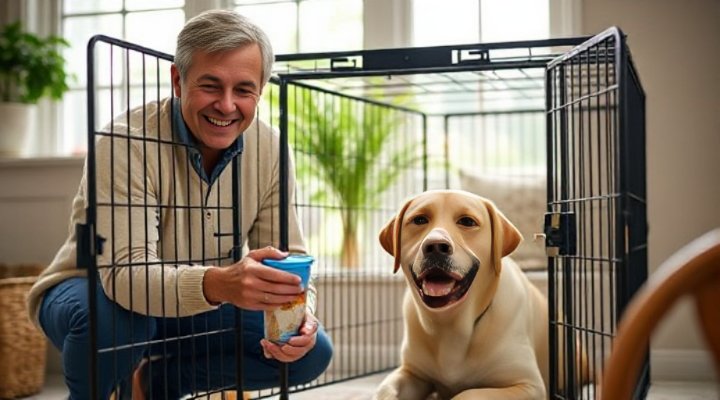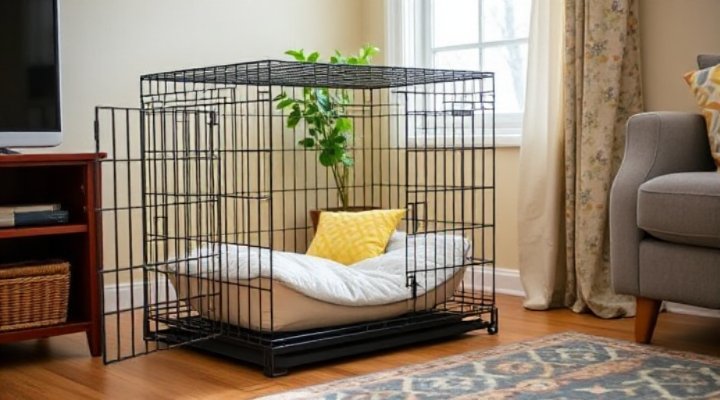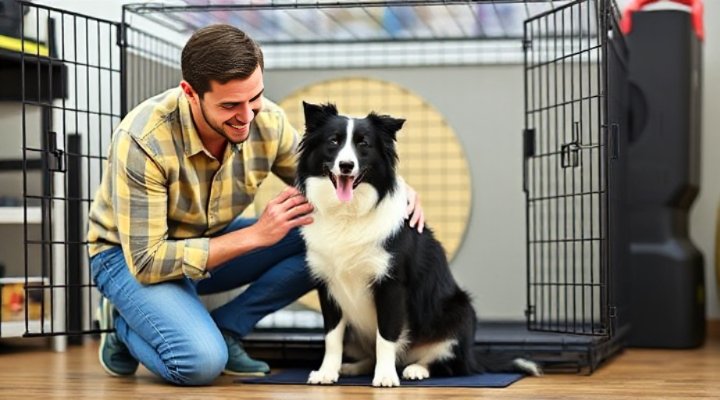Crate training an adult dog might seem challenging at first, but with patience and the right approach, it can become a safe haven for your pet. Many dog owners wonder if it’s too late to start crate training with an adult dog, but the truth is, dogs of any age can learn to love their crate.

Why Crate Training is Beneficial for Adult Dogs
First and foremost, crate training provides a sense of security for your dog. In other words, it becomes their personal space where they can relax and feel safe. Above all, crates are incredibly useful for house training, preventing destructive behavior, and keeping your dog safe during travel.
For example, when I adopted my 3-year-old rescue dog, Max, he was anxious about being left alone. After implementing crate training, he gradually began to see his crate as a comfortable retreat rather than a punishment.

Choosing the Right Crate for Your Adult Dog
The first step in crate training adult dog is selecting the appropriate crate. Most importantly, it should be large enough for your dog to stand up, turn around, and lie down comfortably. Meanwhile, you can find helpful tips on choosing the perfect crate in our guide on how to choose the right pet crate.
There are several types of crates available:
- Wire crates (offer good ventilation)
- Plastic crates (great for travel)
- Soft-sided crates (lightweight and portable)

Step-by-Step Crate Training Process
1. Introduce the Crate Gradually
Firstly, place the crate in a common area with the door open. Subsequently, encourage your dog to explore it by placing treats and favorite toys inside. The American Kennel Club recommends this gradual approach to crate training adult dogs.
2. Create Positive Associations
Furthermore, feed your dog near the crate, then eventually inside it. This helps build positive connections with the space. Similarly, you can use special treats that your dog only gets in the crate.

3. Increase Crate Time Slowly
Begin with short periods (5-10 minutes) while you’re home. After that, gradually increase the duration. Meanwhile, our article on crate training basics offers additional helpful tips.
4. Practice Leaving the House
Once your dog is comfortable, start leaving for short periods. Most importantly, keep your departures and arrivals low-key to avoid creating anxiety.

Common Challenges and Solutions
Some adult dogs may whine or bark initially. In this case, ensure they’ve had enough exercise and potty breaks before crate time. On the other hand, if your dog shows signs of severe distress, you may need to slow down the training process.
For dogs with separation anxiety, our guide on solving dog anxiety issues can provide additional support.
Making the Crate Comfortable
To clarify, a comfortable crate should include:
- Soft bedding
- Favorite toys
- Water (for longer stays)
- Proper ventilation
Remember, the crate should never be used as punishment. Instead, it should always be associated with positive experiences.
Transitioning to Overnight Crate Use
When your dog is comfortable with daytime crate use, you can begin overnight crate training. Firstly, place the crate in your bedroom if possible. Subsequently, you can gradually move it to its permanent location.
For more on establishing routines, check out our training schedule guide.
Final Thoughts on Crate Training Adult Dogs
In conclusion, crate training adult dog requires patience and consistency. While it might take longer than with a puppy, the benefits are equally rewarding. With time, your dog will view their crate as a safe, comfortable space.
Remember, every dog is different. Some may adapt quickly, while others need more time. The key is to go at your dog’s pace and make the experience positive.
Related Keywords: dog crate training tips, how to crate train an adult dog, best crate training methods, adult dog crate training schedule, crate training rescue dog
